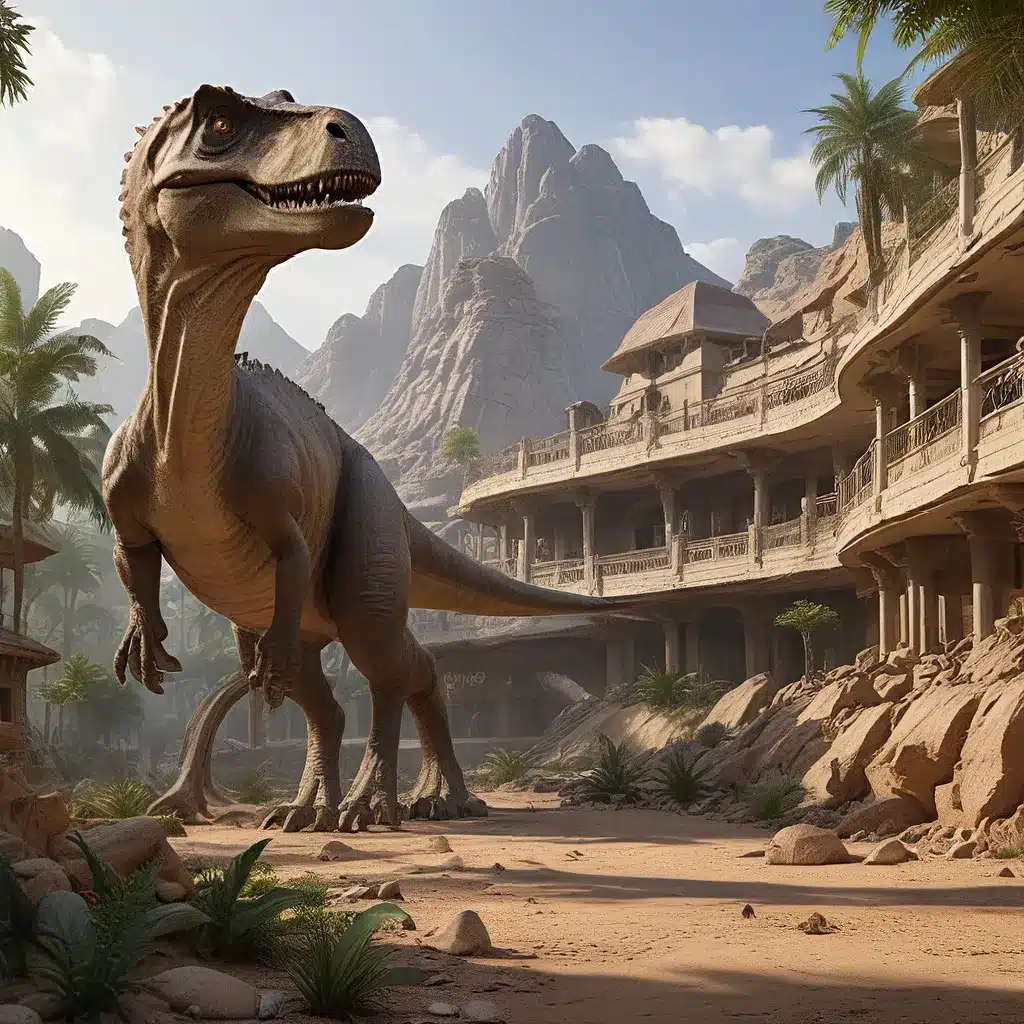
The ancient world was a treasure trove of remarkable civilizations, each leaving an indelible mark on the landscape through their architectural achievements. Among these storied pasts, the Talayotic culture of the Spanish Balearic island of Menorca stands out as a captivating example of human ingenuity and resilience in the face of a harsh, unforgiving environment.
Menorca: The Cradle of Cyclopean Wonders
Long before the rise and fall of the great Mediterranean empires, the Talayotic people carved out a life on the windswept, largely treeless Menorcan landscape, leaving behind a remarkable legacy in stone. These hardy pioneers, who may have originated from the northeast of the Iberian Peninsula or the region around the Gulf of Lion in France, arrived on the island’s shores in the second half of the third millennium BC, bringing with them a few domesticated animals and basic tools.
The earliest signs of the Talayotic architecture are evident in the dolmens, or simple megalithic tombs, dating back to around 2000 BC. These burial mounds would soon give way to the first cyclopean constructions, known as navettas – dwelling structures shaped like inverted ship hulls. These unique structures, measuring between 16 to 66 feet in length and 10 feet wide, provided shelter for large families, who would gather around a central fire on stone benches attached to the walls.
As the Talayotic culture evolved over the centuries, their architectural innovations became increasingly sophisticated. Around 1200-500 BC, the population growth led to the construction of the talayots, massive, truncated cone-shaped structures that served as watchtowers and community centers, scattered across the island. These colossal collective efforts were a testament to the advancing civilization of the Talayotic people.
The Ritual Significance of Taula Shrines
The late Bronze Age and early Iron Age also saw the emergence of another unique Talayotic feature – the taula, a T-shaped slab structure standing four to five meters high, set within a horseshoe-style enclosure. These ritual structures, believed to have served as places of worship, were often oriented to face the southern horizon, potentially aligned with the seasonal movements of the Centaurus constellation, according to the theories of the late British archaeoastronomer Michael Hoskin.
The taulas were adorned with evidence of religious practices, including the remains of sacrificed animals and bronze statuettes. Margarita Orfila, an archaeology professor who co-authored the World Heritage application for Menorca’s Talayotic sites, explains that the ritual and religious function of these shrines is well-documented.
The distinctive architectural features of the talayots and taulas, combined with the collective burial practices and the apparent lack of social hierarchy, suggest a deeply interconnected society that thrived in relative isolation for centuries, until the arrival of the Phoenicians, Greeks, Carthaginians, and Romans in the fifth century BC.
Fortifying Against External Threats
As the Mediterranean world became increasingly interconnected, the once-peaceful Talayotic society found itself thrust into the complex web of colonial rivalries. The sea, which had previously represented a barrier protecting the islanders, now became a conduit for trade and a pathway for invading forces.
In response to these new threats, the Talayotic people began to fortify their settlements with cyclopean walls that encircled their villages. These impressive defensive structures, built without the use of mortar, showcased the engineering prowess of the Talayotic builders, who skillfully adapted their architectural techniques to meet the demands of a changing geopolitical landscape.
The Balearic slingers, renowned for their exceptional marksmanship, were sought after as mercenaries by the Punic armies, further highlighting the Talayotic society’s integration into the wider Mediterranean world. However, this exposure to external powers ultimately led to the decline of the Talayotic culture in the final years of the second century BC, as the island was conquered and Romanized.
The Enduring Legacy of Talayotic Architecture
Despite the passing of the Talayotic era, the architectural legacy of these ancient islanders lived on. The descendants of the Talayotic people continued to build mortarless walls as boundaries for their farms, creating a “great wall of Menorca” that snakes across the island for nearly 7,000 miles, connecting the present to the prehistoric past.
Today, Menorca’s Talayotic sites are recognized for their global cultural significance, with nine of them inscribed on the UNESCO World Heritage List. These well-preserved archaeological landscapes, which seamlessly integrate with the island’s daily life, stand as a testament to the enduring ingenuity and resilience of the Talayotic people, who carved out a remarkable civilization in the face of a seemingly inhospitable environment.
Lessons from the Talayotic Pioneers
The architectural marvels of the Talayotic culture offer valuable insights into the ingenuity and adaptability of ancient societies. Their use of locally sourced materials, such as limestone, to construct monumental structures, and their ability to thrive in a challenging landscape, serve as inspiring examples of how humans can harness their surroundings to create lasting legacies.
Moreover, the Talayotic people’s collective approach to building, which required significant coordinated efforts, suggests a highly organized and cohesive society. This communal spirit, reflected in the construction of the talayots and taulas, stands in contrast to the hierarchical structures often associated with ancient civilizations, providing a unique perspective on social organization and community-driven development.
As we continue to explore and unravel the mysteries of the Talayotic culture, we are reminded of the profound impact that these ancient pioneers had on the Menorcan landscape and, ultimately, on our understanding of human history. Their architectural achievements, woven into the fabric of the island, serve as a captivating testament to the resilience and ingenuity of the human spirit.


